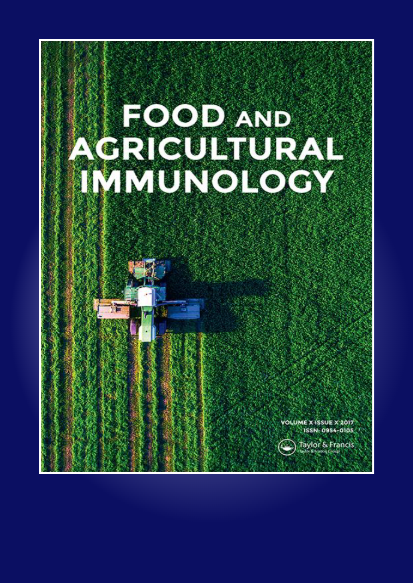通过tlr4依赖性激活小鼠巨噬细胞、RAW264.7细胞中的p38、JNK和ERK1/2的免疫刺激活性
IF 2.1
3区 农林科学
Q3 CHEMISTRY, APPLIED
引用次数: 0
摘要
本文章由计算机程序翻译,如有差异,请以英文原文为准。
Immunostimulatory activity of Paeonia lactiflora through TLR4-dependent activation of p38, JNK, and ERK1/2 in mouse macrophages, RAW264.7 cells
ABSTRACT Paeonia lactiflora (P. lactiflora) has been recently reported to increase the production of proinflammatory mediators and activates phagocytosis in macrophages. Thus, in this study, we tried to verify the macrophage activation of Paeoniae Radix Rubra (PRR, also known as red peony root) and elucidate its mechanism of action. PRR upregulated the production of proinflammatory mediators and activated phagocytosis in RAW264.7 cells. However, these effects were reversed by inhibition of TLR2/4. In addition, the inhibition of p38, JNK, and ERK1/2 reduced the PRR-mediated production of proinflammatory mediators, and the SPL-mediated activation of p38, JNK, and ERK1/2 was blocked by the TLR4 inhibition. These findings indicate that PRR may activate macrophages through TLR4-dependent activation of p38, JNK, and ERK1/2. These indicate that PRR has immunostimulatory activity. Thus, it is believed that PRR can be used as a functional food agent that enhances the immune system.
求助全文
通过发布文献求助,成功后即可免费获取论文全文。
去求助
来源期刊

Food and Agricultural Immunology
农林科学-毒理学
CiteScore
5.30
自引率
6.70%
发文量
52
审稿时长
2 months
期刊介绍:
Food and Agricultural Immunology is an international open access journal publishing original immunological research with applications in food, agricultural, environmental and veterinary science. Submissions describing the use of immunological techniques and methods are particularly welcomed.
The journal aims to expand our understanding of the interactions at the interface of food and immune systems including studies on:
-Development of diagnostic systems – all types of ligand-based assays, e.g. antibody, aptamer
-Application of ligand-based assays for the detection or identification of molecules of interest in food science, agricultural research, veterinary investigations and clinical systems relating to food allergy or sensitivity to agricultural chemicals
-Effects of food on the immune system
-Studies on allergy and allergic reactions
-Investigations into food allergies
-Development of allergen-free food systems
-Development of novel assay formats
-Applications of assay systems to the monitoring of food items in relation to safety and labelling
-Food quality issues, e.g. speciation, adulteration and contamination
-Comparisons between different analytical techniques
The journal publishes research and review articles and is essential reading for food scientists, immunologists and all those concerned with the interaction between food and immune systems.
 求助内容:
求助内容: 应助结果提醒方式:
应助结果提醒方式:


